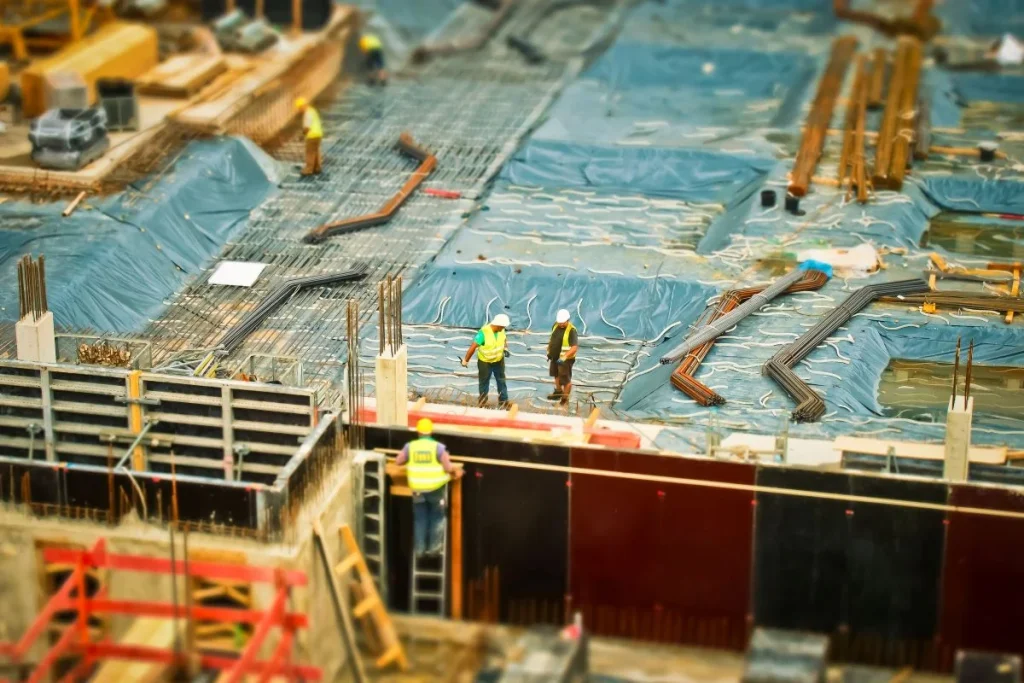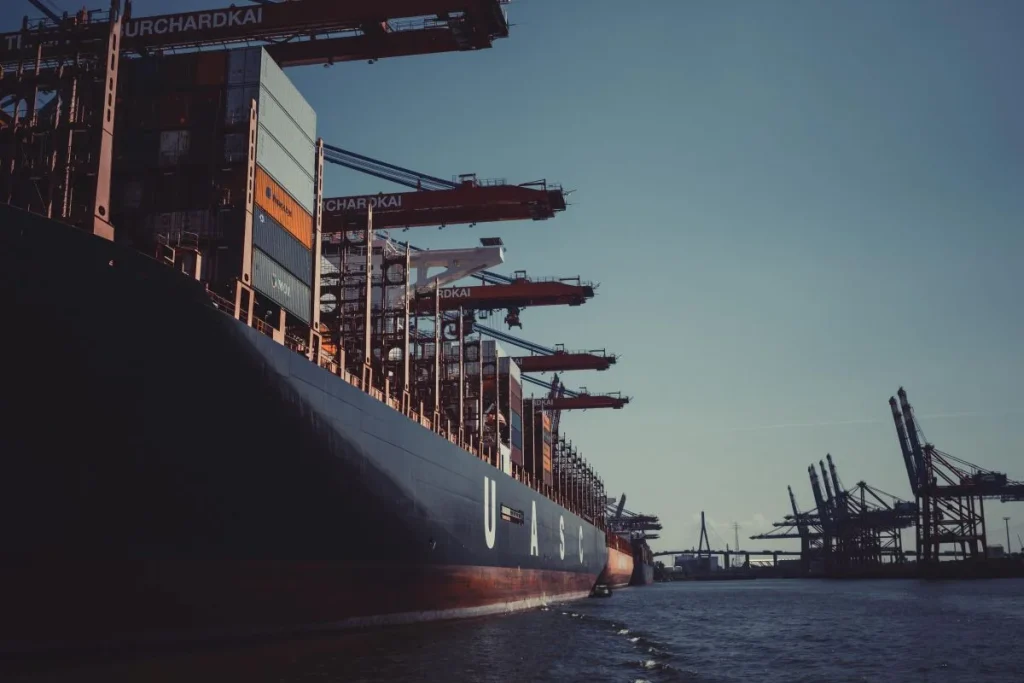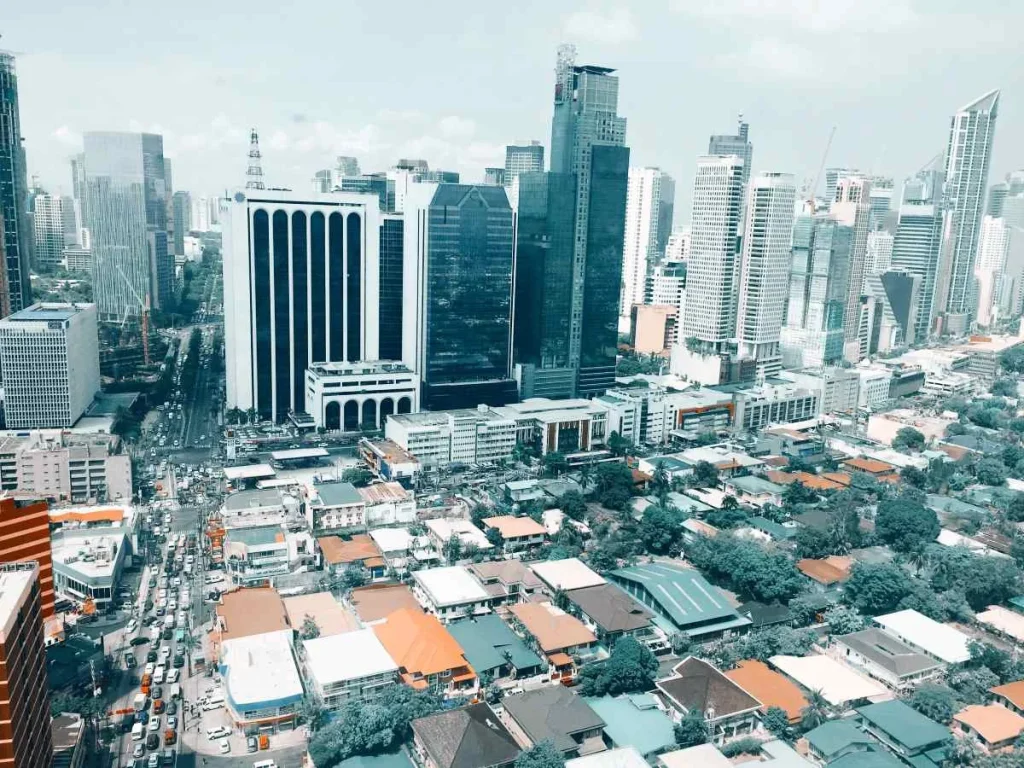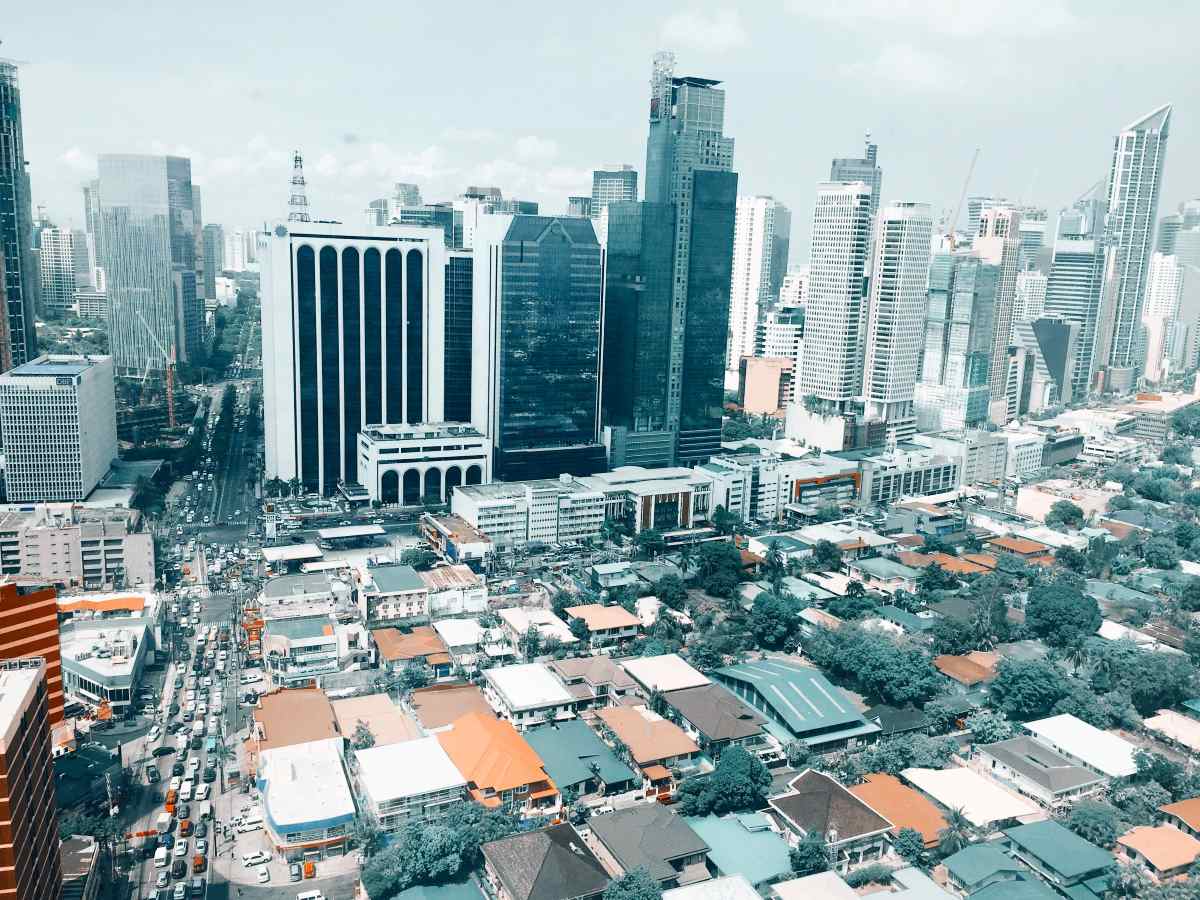The Philippines, a Southeast Asian archipelago known for its stunning beaches, vibrant culture, and warm hospitality, is now emerging as an ultimate investment destination. With its strong economic growth, government reforms, and strategic location, the Philippines presents a wealth of opportunities for both local and international investors with business investments and real estate investments, such as a house and lot for sale.
As the Philippines continues to be a desirable location for European firms, the country is approaching the “golden age” of investments from Europe.
Over the past few years, the Philippines’ economy has grown significantly. It is one of the fastest-growing economies in Asia thanks to its continuously superior GDP growth rate compared to many of its regional counterparts. Despite the difficulties caused by the global pandemic, the Philippines’ GDP rose by 6.4% in 2021, according to the World Bank. International investors have become interested in this economy due to its durability and great performance.
The young and energetic workforce is one of the Philippines’ biggest assets. With a population of over 110 million, the majority of whom are under the age of 30, the nation has a sizable and skilled labor force. This demographic advantage offers a solid framework for economic expansion and chances for enterprises to access a thriving consumer market.
To make doing business easier and entice greater investment, the Philippines government has enacted a number of reforms. The government’s dedication to fostering an advantageous business environment is demonstrated, among other things, by the passage of the Ease of Doing Business Act and the implementation of the Comprehensive Tax Reform Program. Infrastructure improvements and governmental reforms are important elements that boost a nation’s development and investment appeal. In the Philippines, the government has recently implemented important reforms and steps to improve the economic climate and support the development of infrastructure.
“Build, Build, Build” Infrastructure Program

The “Build, Build, Build” program, a significant infrastructure-building endeavor, was started by the Philippine government. It seeks to overcome infrastructure gaps, improve connectivity, and promote economic expansion everywhere across the nation. The program calls for building roads, bridges, trains, public transport systems, airports, seaports, and other significant infrastructure projects. These infrastructure improvements enhance logistics, lower transportation costs, increase production, and draw capital into numerous industries.
By boosting public investment in various infrastructure projects, such as transportation, water resources, power, and urban development, the program seeks to close the infrastructure gap in the nation. It aims to improve connection, support regional growth, increase economic productivity, and draw in investments.
The “Build, Build, Build” program, which emphasizes infrastructure as a vital driver of economic growth and development, has been acknowledged as one of the administration of Rodrigo Duterte’s signature initiatives. The government wants to promote connection within and between areas, spur economic activity, and raise the standard of infrastructure across the Philippines. It is important to note that the program has encountered difficulties in the form of project delays, financing restrictions, and coordination issues. The administration nevertheless keeps moving forward with its infrastructure program because it understands how crucial strong infrastructure is to achieving long-term sustainable growth.
Special Economic Zones and Freeports

To encourage investment and advance economic activity, the government has created freeports and special economic zones (SEZs) across the nation. These zones offer a variety of advantages to investors, including tax breaks, the duty-free importation of capital goods, streamlined regulatory procedures, and infrastructure support. SEZs and freeports concentrate on particular sectors of the economy or types of business, forming business clusters and promoting competitiveness and innovation.
- Companies operating in these zones frequently benefit from tax breaks such as lowered corporate income tax rates, exemptions from or reduced import and export tariffs, and tax holidays for a set amount of time.
- SEZs and Freeports typically have streamlined customs processes that enable quicker clearance of supplies and goods. This eases administrative hassles and promotes global trade.
- SEZs and Freeports frequently get major investments in the development of their infrastructure, which includes telecommunications, utilities, transportation, and logistics. By doing this, it is made sure that the zones have the digital and physical infrastructure required to sustain enterprises.
- The objectives of these zones are to foster industrialization, encourage foreign direct investment, and foster job prospects within particular geographic areas. They frequently concentrate on particular industries like manufacturing, technology, finance, or tourism.
Digital Transformation and Innovation

The Philippine government is aware of how crucial innovation and digital transformation are to fostering economic expansion. Enhancing connections, promoting the development of digital infrastructure, and fostering the expansion of the digital economy are the goals of programs like the National Broadband Plan, the Digital Transformation Strategy, and the creation of innovation hubs.
Digital Transformation
The purpose of digital transformation is to increase organizational agility, promote customer interaction, strengthen internal procedures, and achieve a competitive advantage in the digital era. In order to accept new technology, adjust to shifting customer expectations, and foster innovation, a change in mentality, culture, and processes is necessary.
Innovation
On the other hand, innovation describes the development and use of fresh concepts, methods, goods, or services that lead to notable advancements or discoveries. It entails questioning accepted conventions, attempting unique strategies, and creating original solutions to challenges or opportunities.
Overall, the Philippines’ infrastructure improvements and governmental changes show a dedication to fostering an inviting business environment. These initiatives are meant to lower bureaucratic hurdles, promote connectivity, and better the business environment. The opportunities created by these reforms might be advantageous to investors, especially in industries like infrastructure, manufacturing, logistics, tourism, and digital innovation.
Strategic Location and Market Access
The Philippines, which is located in the center of Asia, act as a gateway to one of the regions with the highest economic growth. Its advantageous location provides quick access to the Association of Southeast Asian Nations (ASEAN), a market with more than 600 million consumers. The Philippines’ participation in a number of trade agreements, including the Regional Comprehensive Economic Partnership (RCEP) and the ASEAN Economic Community, strengthens its position as a desirable investment location.
Thriving Industries and Emerging Sectors

The Philippines is home to a diverse range of thriving industries and emerging sectors. The business process outsourcing (BPO) industry, in particular, has experienced significant growth, earning the country the title of “Call Center Capital of the World.” Additionally, sectors such as manufacturing, tourism, renewable energy, e-commerce, and fintech have been identified as key areas for investment.
To encourage investment, the Philippine government provides various incentives and perks for both local and foreign investors. These include tax breaks, duty-free importation of capital equipment, simplified registration processes, and other benefits aimed at reducing the costs of doing business. The creation of special economic zones and freeports also offers investors additional advantages and opportunities.
One of the factors that make the Philippines an attractive investment destination is its cultural compatibility and high English proficiency. With a long history of Western influence and a widespread command of the English language, the Philippines provides a conducive environment for foreign investors to operate and communicate effectively.
In conclusion, the Philippines is entering a golden age of investment opportunities. With its robust economic growth, government reforms, strategic location, and supportive business environment, the country offers a wealth of potential for investors looking to expand their portfolios. The Philippines’ young and dynamic workforce, coupled with its
Investing in the Philippines offers a range of opportunities

Real Estate: The real estate sector in the Philippines has been booming in recent years, driven by demand from both local and foreign investors. Metro Manila and other major cities offer opportunities for commercial and residential development, including condo for sale, office spaces, and retail properties. The growth of the business process outsourcing industry has also fueled demand for office spaces.
- Business Process Outsourcing (BPO): With a focus on call centers, IT outsourcing, and shared services, the Philippines has emerged as a major global provider of BPO services. To meet the rising demand for outsourcing services, investors may want to start their own BPO firms or collaborate with already established service providers.
- Manufacturing and Industrial Zones: The Philippines’ manufacturing industry is growing as a result of the nation’s talented workforce, welcoming business climate, and government incentives. Investors interested in manufacturing and export-oriented sectors can benefit from SEZs and industrial parks’ tax breaks, simplified regulations, and infrastructure support.
- Renewable Energy: The Philippines presents prospects in the field thanks to its wealth of natural resources and dedication to sustainable development. Governmental subsidies and programs designed to lessen reliance on fossil fuels stimulate investments in solar, wind, hydro, and geothermal power projects.
- Tourism and Hospitality: The Philippines is a popular travel destination thanks to its beautiful landscapes, rich cultural heritage, and welcoming people. Hotels, resorts, dining establishments, and other tourist-related enterprises can all be included in an investment in the tourism and hospitality sector. Campaigns, the creation of infrastructure, and financial incentives for tourism-related investments are some of the ways the government promotes tourism.
- The “Build, Build, Build” program of the Philippine government has made investments in infrastructure development possible. To increase connectivity and boost economic growth, projects are being launched to build roads, bridges, airports, seaports, and mass transit systems. Investors might take part in public-private partnerships (PPPs) or look into opportunities in the engineering and construction industries. Infrastructure Projects:
It’s crucial to remember that investing in any nation carries dangers, and the Philippines is no different. It is important to carefully analyze variables including governmental stability, regulatory changes, currency fluctuations, and market volatility. To fully grasp the unique investment environment and rules in the Philippines, it is advisable to speak with local authorities, financial consultants, or legal specialists. Prior to making any financial decisions, careful due diligence and risk evaluation are essential.
Foreign direct investment Philippines

The term “foreign direct investment” (FDI) describes an investment made by people, businesses, or other organizations from one country (the home country) into another (the host country) with the aim of acquiring a long-term stake in the invested entity and exercising significant influence or control over it. FDI is a long-term commitment that can take many different forms, including starting new firms or buying out already existing ones in the host nation.
A major ownership share in a foreign company or the creation of a new corporate entity in the host nation are two examples of ownership and control of FDI. The investor often owns a sizeable portion of the company’s stock, which gives them power and influence over the management and operations of the invested business.
Long-term investment FDI is distinct from portfolio investment when buyers of equities or financial instruments do so largely for the purpose of making quick profits. Long-term commitment is required for FDI, with the goal of creating a reliable presence in the host nation to reap the rewards of consistent returns on investment.
Strategic Goals Investors participate in FDI to accomplish particular strategic goals. Accessing new markets, protecting natural resources, taking advantage of cost savings, extending the supply chain, acquiring technological know-how, or obtaining access to trained labor in the host nation are a few examples of these goals.
Movement of Financial Capital, Technology, Knowledge, and Experience Foreign Direct Investment (FDI) entails the movement of financial capital, technology, knowledge, and experience from the home country to the host country. This transfer can help local businesses thrive, boost productivity, generate job opportunities, and promote economic expansion in the receiving nation.
The host country gains from FDI in a number of different ways. It can entice the inflow of foreign currency, produce employment opportunities, improve technical development, support the growth of local industries, advance infrastructure development, and promote economic expansion. Furthermore, FDI helps local businesses become more competitive overall by facilitating the transfer of managerial and technical skills.
FDI is not without risks and challenges. Investors encounter a variety of difficulties, including turbulence in the political and regulatory spheres, complex legal issues, turbulence in the economy, turbulence in the exchange rate, turbulence in the cultural landscape, and potential conflicts between home and host country interests. Investors need to assess and handle these risks carefully.
Governments frequently promote FDI by putting policies into place and providing incentives to entice foreign investors. Tax reductions, financial assistance, streamlined regulatory procedures, entry into special economic zones, and intellectual property protection are a few examples of these incentives. Foreign direct investment is essential for advancing technological and intellectual transfer, economic development, and global economic integration. It boosts productivity, encourages growth, and creates jobs in both the home and the host countries.
Related Blog: The Time is Now: Philippines, the Best Place to Invest


